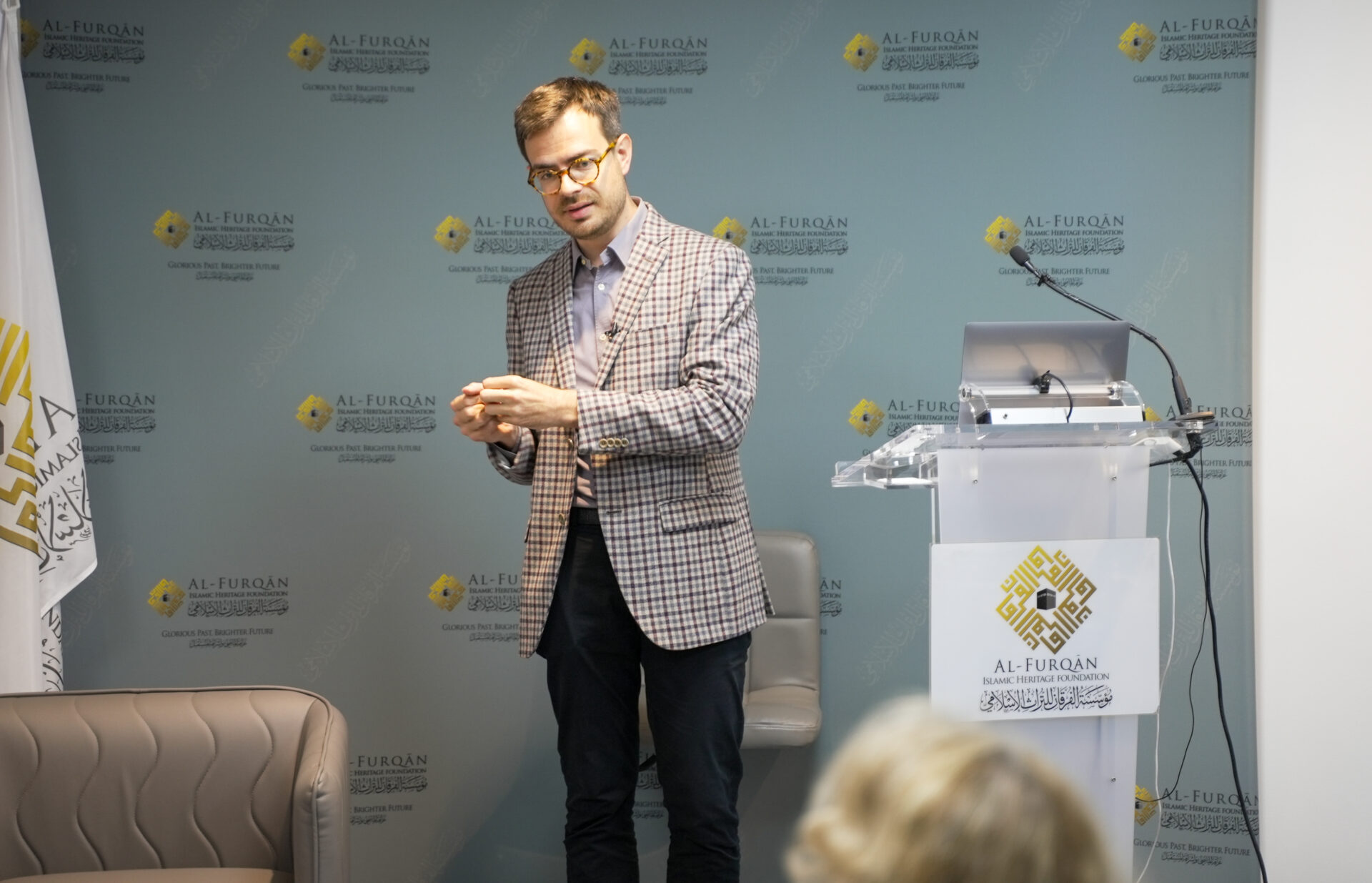Lecture by Dr Umberto Bongianino
On Wednesday 22 May 2024, Al-Furqan Islamic Heritage Foundation organised a public lecture entitled "Wondrous intricacy: the place of 'carpet pages' in Islamic art ", delivered by Dr Umberto Bongianino, Departmental Lecturer in Islamic Art and Architecture at the Khalili Research Centre, University of Oxford.
Mr Sali Shahsivari, the Managing Director of Al-Furqan, gave a brief introduction of the lecturer, whose research focuses on the material cultures, epigraphic traditions, and scribal practices of al-Andalus and the Maghrib. Dr Bongianino’s recently published monograph is titled The Manuscript Tradition of the Islamic West: Maghribī Round Scripts and the Andalusī Identity (Edinburgh University Press, 2022).
The lecture, which was held at the Foundation’s headquarters in London, is part of Al-Furqan’s series of Lectures on Islamic Heritage. Previous lectures have tackled “other aspects of Islamic heritage, such as different aesthetic aspects that are found in Islamic manuscripts, including the Quran manuscript…as well as other artistic aspects found in the various tangible objects of this rich and diverse Islamic heritage”, said Mr Shahsivari.
In his opening remarks, Mr Sharaf Yamani, Chairman of Al-Furqan Foundation, welcomed the lecturer and attendants, noting that the lecture is a “rare opportunity to deepen our understanding of the sophisticated beauty of inherent in Islamic art”.

Mr Yamani said that Al-Furqan Foundation had “long recognised the pivotal role that Qur’anic studies have had in enriching our grasp of the cultural Islamic heritage”. He added that “over the years we have devoted numerous topics, articles, publications, training courses, and conferences to exploring the Qur’an’s multifaceted aspects. This lecture continues that commitment, reinforcing our mission to delve deeper into the historical, artistic, and spiritual layers of Islamic scholarship”.
Addressing the specific topic of the lecture, Mr Yamani said that Islamic carpet pages “do far more than just fill spaces. I would say that they are more than just art. Many believe that they mirror the divine design that the Qur’an itself marvels at.”
At the outset of his lecture, Dr Bongianino highlighted the challenges faced by Islamic art historians as they struggle to find “written sources mentioning - let alone discussion - Qur’anic illumination”. Dr Bongianino added that “the technical treatises that do survive will tell you how to apply gold leaf, how to make different kinds of gold ink, other coloured pigments, but they are silent on the types and motives and patterns that are used in the illumination. They are silent on the aesthetic, on their intended purpose, and on their meaning.”
Nevertheless, Dr Bongianino said that, through examining the works of art, he sought to understand the “intentions” of the artists and “the reactions they were supposed to elicit in the viewers”.
Showcasing examples of such works of art in manuscripts as well as wall paintings, the lecturer said that “sometimes these patterns are interspersed with invocations to God…These inscriptions seem to reveal the desire to convey the underlying notion of God as the ultimate aesthetic agent, the Creator of beauty, pleasure, order, and to invoke His name as part of the decoration of one’s home”.
Dr Bongianino cited Ibn al-Haitham’s concept of naqsh, which the lecturer believes is helpful for us to “understand the aim of Andalucian illuminators”; namely, “to create order and harmony from a bewildering array of different shapes, colours and textures in order to generate beauty and elicit pleasure in the eye of the beholder”.
The lecturer also cited the views of other Islamic Medieval sources dealing with various Islamic crafts in order to understand the aesthetic principles underlying Qur’anic illumination.
Dr Bongianino argues that the close affinity between the repertoire of medieval illuminators, plaster carvers, woodworkers, and other categories of craftspeople is undeniable, adding that all these visual idioms should be approached through a common interpretive lens.
The lecturer sought to demonstrate the applicability of aesthetic concepts generally associated with other media — such as brilliance, perfection, intricacy, enthrallment, and a range of natural and supernatural similes — to the visuality of illuminated manuscripts.
The lecture concluded with a lively Questions and Answers session.









